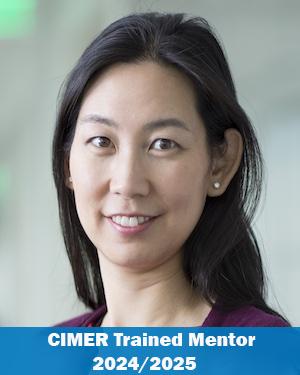Research News
06/23/2025
Cleveland Clinic clinician-scientist shares power of dual expertise in glioblastoma
Jennifer Yu, MD, PhD, who was recently appointed as a council member for ASCI, shares insights on the importance of tackling disease from both the bedside and the bench.

Jennifer Yu, MD, PhD, a radiation oncologist and clinician-scientist at Cleveland Clinic, was recently elected as the newest council member for the American Society of Clinical Investigation (ASCI).
The ASCI is a society composed of 3,000 clinician-scientists, honoring leaders in the field and supporting future clinician-scientists. Alongside her clinical work focused on glioblastoma, Dr. Yu runs a lab focused on glioblastoma cell state regulation and therapeutic resistance with the goal of improving treatment options. Growing up with a mom who was a nurse and a dad who was a researcher helped influence her decision early on to pursue the clinician-scientist path, and she enrolled in the medical scientist training program at Columbia University.
We talked to her about the benefits and challenges unique to being a clinician scientist.
How does work in the clinic and in the lab complement each other?
In my role as a clinician I treat patients with glioblastoma, which is an incurable form of brain cancer. Every week, I have really tough conversations with patients and their families about how we can treat the tumor, which is typically a combination of surgery, radiation and chemotherapy. The treatment itself is difficult and asks a lot of these patients. And yet all it really does is improve the quality of life. We try to keep the tumor from coming back, but the patients will ultimately succumb to their disease and have a lot of morbidity because of our treatments. It’s all very humbling to think that despite all the work that we've been doing over the past decades, we haven't moved the needle that much.
Research is critical because it informs how we can take better care of our patients. My laboratory is focused on the most malignant population of cancer cells — the glioma stem cells — and how they are shaped by their environment. They are resistant to radiation and chemotherapy, and they've adapted mechanisms to survive, change their cellular state, become more resistant to treatment and more invasive. In the lab, we study why these glioma stem cells behave the way that they do and try to identify vulnerabilities so we can devise new treatment strategies to target them more effectively.
How does your role benefit your work with glioblastoma?
As a clinician-scientist, I am connecting experts across these diverse fields so we can tackle complex problems like glioblastoma from multiple angles — something that wouldn’t be possible without true interdisciplinary collaboration. For example, we have a clinical trial going on now which sits at the intersection of neuroscience and cancer biology. We are performing neural recordings at the time of surgery to determine how neural activity promotes glioblastoma invasion and therapeutic resistance. We have a large team of people who specialize in neurosurgery, epilepsy, neuroradiology, neuropathology and cutting-edge basic science technologies and preclinical modeling. As a clinician-scientist, I help bring our team together by acting as a bridge between different specialties. I understand the language each group uses, which makes it easier for us to communicate, collaborate and work more efficiently and effectively together.
What are some challenges that are unique to being a clinician-scientist?
Research has significantly advanced technologically in the last few years. There are many new techniques that we need to learn to stay current and make important discoveries. And through it all, mentoring students and trying to develop the next generation of scientists and physicians is so important. It all comes down to finding the time to balance it all.
ASCI is a great forum to bring together and support clinician-scientists from all walks of life. I love hearing about other people’s journeys, learning about how they navigated their careers and what goals they have for the future. Not many people can understand this dual role, so I’ve truly appreciated being part of a community where we all just get it. I’m so honored and humbled to now be a council member.
What advice would you share with someone debating becoming a clinician-scientist?
Find your passion, then follow your dreams. Being a clinician-scientist requires a lot of hard work, believing in yourself and finding the right mentors, team members and collaborators. Don’t forget to enjoy the whole process. We’re so few and yet we reside in a critically important niche for bridging basic science to translational science into the clinic. I would love to welcome more into the fold!
Featured Experts
News Category
Related News
Research areas
Want To Support Ground-Breaking Research at Cleveland Clinic?
Discover how you can help Cleveland Clinic save lives and continue to lead the transformation of healthcare.
Give to Cleveland Clinic